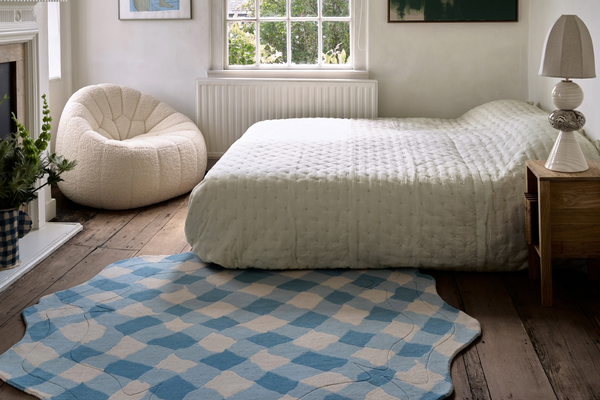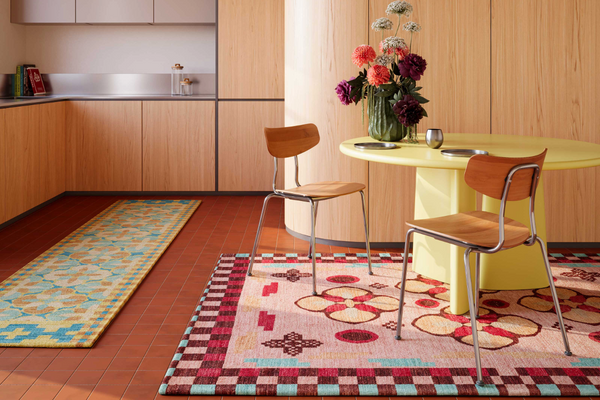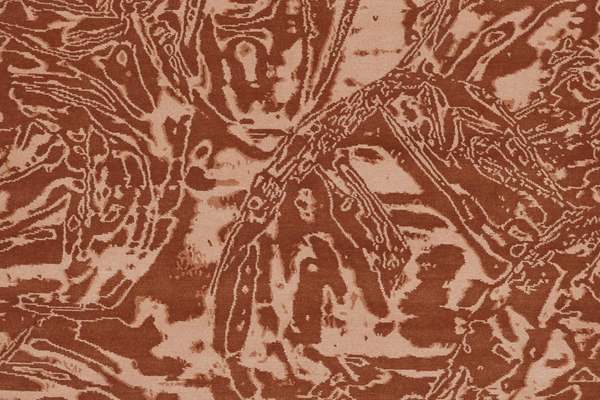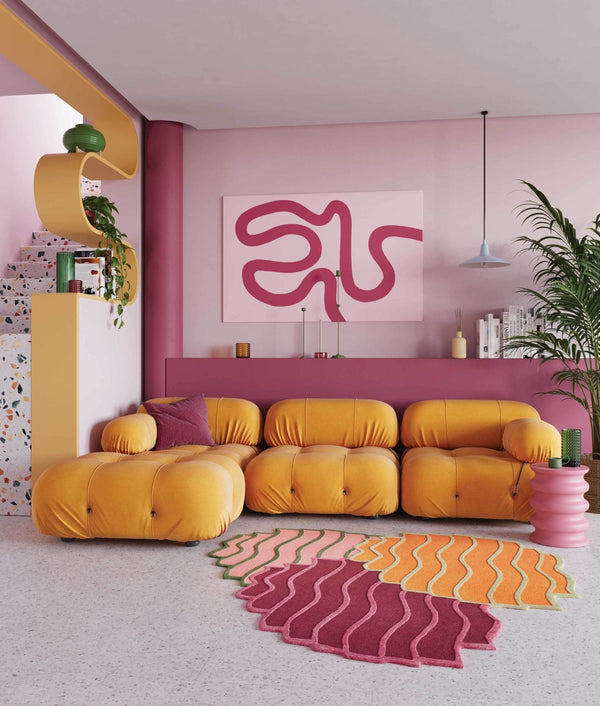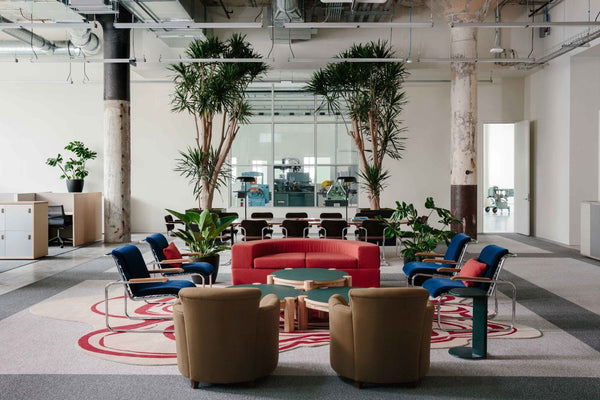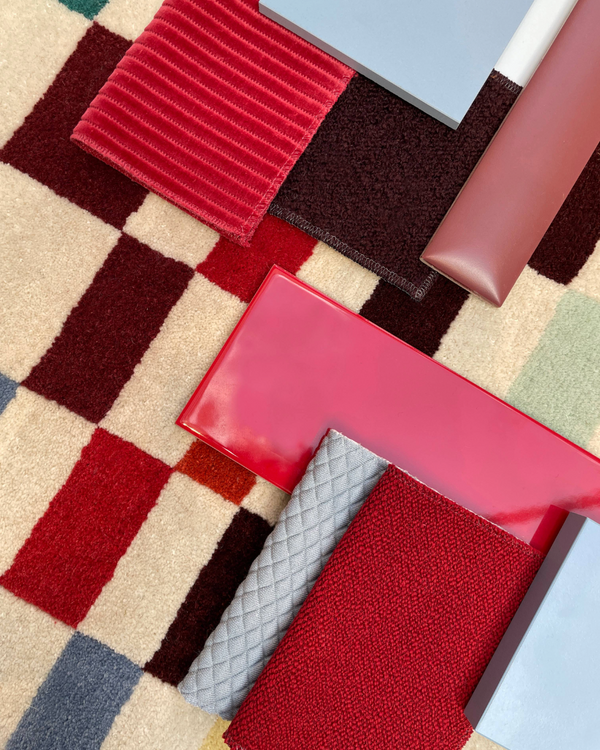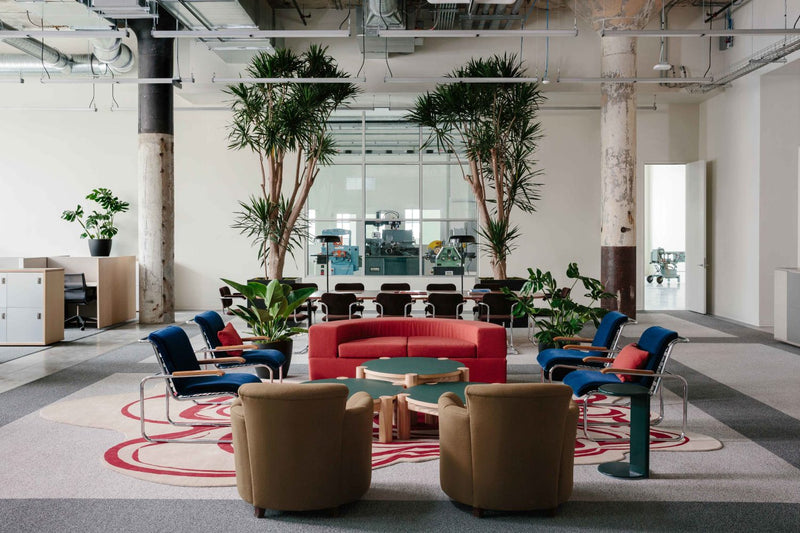
Expert Tips for Styling Rugs in Commercial Spaces
Learn tips for choosing size, patterns, and sustainable options for offices, hotels, and retail.
When it comes to commercial spaces, rugs are more than just floor coverings - they’re design statements that tie a space together, set a mood and even enhance functionality. But let's face it, choosing rugs for busy environments like offices, hotels or retail spaces can be a bit daunting.
How do you choose the right rug for a space that’s both practical and visually appealing?
This blog dives into the art (and science) of styling rugs in commercial spaces, offering both practical tips and industry insights from Gill Thorpe, our head designer. Added to that is some design inspiration to help you make your next project shine.
Whether you’re designing a sleek co-working space, a luxurious hotel lounge or an eye-catching retail experience, these tips will help you make informed decisions to create an impact.
Customisable rugs
Emily Forgot
Amity in Blue
Henry Holland
Plat in Blue
Kangan Arora
Casa in Black and Cream
Catherine MacGruer
Court in Pink
Gill Thorpe
Curb in Olive Mono
Gill Thorpe
Curb in Contrast Purple and Peach
Gill Thorpe
Curb in Lemon Hi Vis
Gill Thorpe
Curb in Reflective Orange
Henry Holland
Rondelle in Green
Kangan Arora
Harlequin X in Blue and Brick
Adam Nathaniel Furman
Meandros Black and White
Why Rugs Are a Key Design Element in Commercial Spaces
Before jumping into the how-to, let's set the stage (or rather, the floor). Here’s why rugs are must-haves for commercial spaces.
Enhancing Aesthetics and Ambiance
Rugs add warmth, colour, and character to any room. They can soften the hard edges of architectural elements, highlight design themes and emphasise brand identity by introducing motifs, pops of colour or textures that make a space memorable.
Boosting Functionality
Rugs do more than look good. They can reduce noise in high-traffic areas, anchor furniture for a cohesive layout and define zones in open spaces. Whether it’s a cozy seating area in a hotel lobby or a breakout space in an office, rugs create structure in multi-functional environments.
Improving Safety and Comfort
Slip-resistant rugs or underlay provide safety in busy spaces, while soft textures create a more inviting feel. A well-placed rug can also reduce foot fatigue in areas where people stand for extended periods, such as behind retail counters.
Showcasing Sustainability
For designers working with conscious clients, using rugs made from sustainable materials like recycled fibres or organic wool can showcase your commitment to environmental responsibility and strengthen your project’s sustainability credentials.
Working with a rug manufacturer dedicated to ethics and reducing impact is essential, that’s why we publish an annual Impact Report on our [Sustainability] page. We’re also proudly a [B Corporation], proving our dedication to building a business that works for all and not for the few.
Now, let’s get down to it…
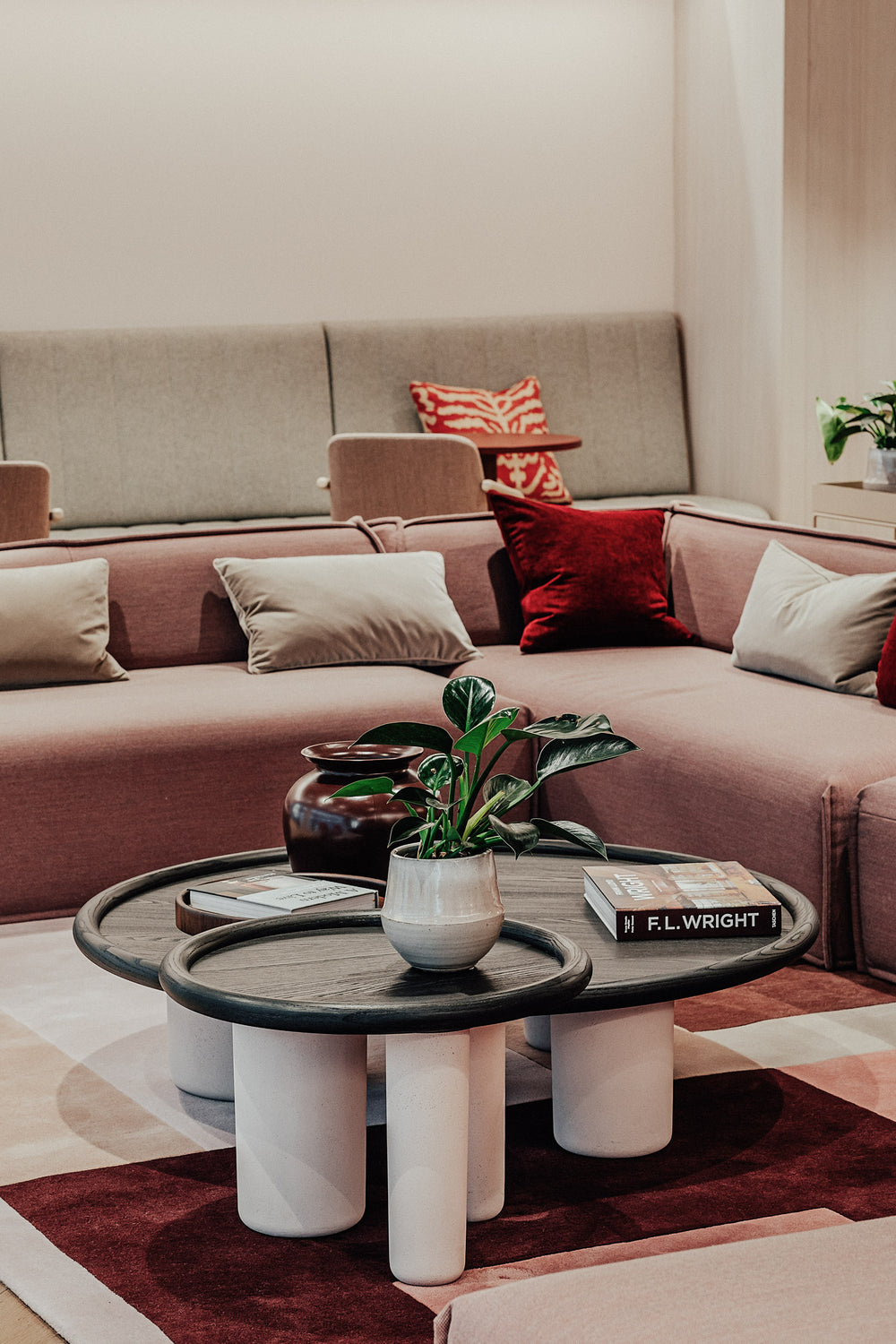
Interior by Basha Franklin, photographed by Taran Wilkhu.
How to Style Rugs in Commercial Spaces
Alongside our catalogue of designer and off-the-shelf rugs, we offer both a customisation service and completely bespoke rug design. By designing your own, you can impress your clients with the attention-to-detail and design flair whilst also bringing a tactile feeling of fine craftsmanship to a space.
Pro tip: If you’re unsure about going totally bespoke because of time or resources, why not customise an existing designer rug by changing the colour or shape. This means the rug will match the scheme without having to start from scratch.
1. Choose Rugs That Suit the Purpose
Every space serves a specific function and your rug choices should reflect that. Here’s how to align rug selection with the purpose of the room:
- Office Spaces: Opt for durable rugs with a muted or neutral palette to complement the professional setting. Modular rugs or carpet tiles are great for adaptability.
- Hospitality Spaces: Go bold for hotel lobbies or lounges. Plush textures and eye-catching patterns create a luxurious atmosphere. Use layered rugs to define spaces within large, open floor plans.
- Retail Stores: Use rugs to direct foot traffic, highlight key areas (like checkout counters), or make fitting rooms feel more intimate and cosy.
Pro Tip: Think of the colours and materials that are used, mixing 2-3 tones of wool will hide marks more than a solid colour.
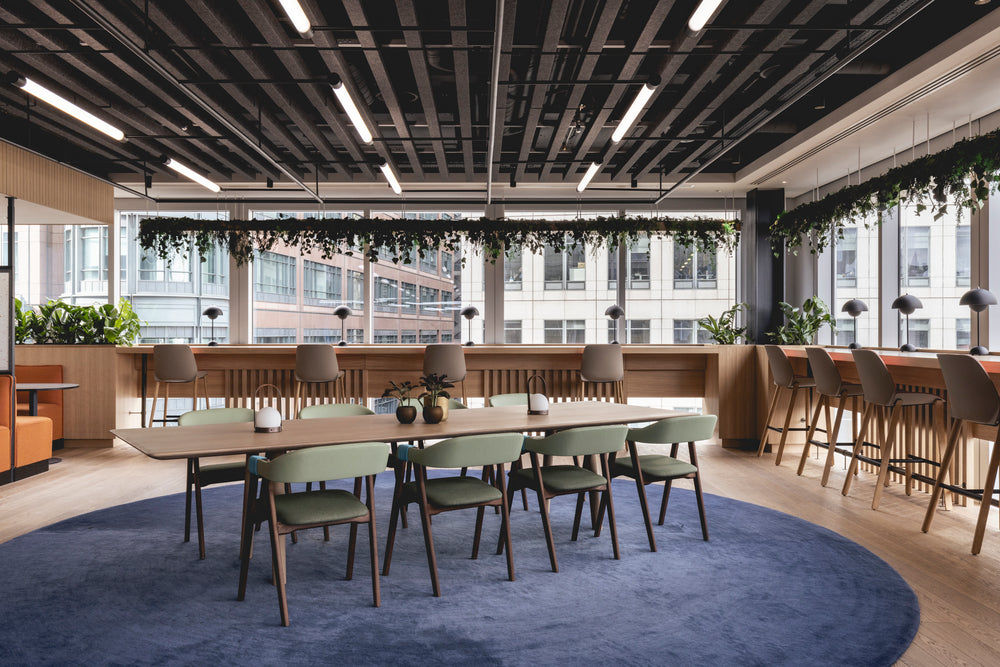
Interior by The Furniture Practice, Photographed by Billy Bolton.
2. Play with Size
Rug size isn’t one-size-fits-all. It should connect with the proportions of the room and its furniture layout.
- Large Areas: Go big or go home! Select oversized rugs for open lobbies or conference halls to prevent the rug from looking like a “floating island.”
- Small Zones: Use smaller rugs to define separate areas like seating zones in coworking spaces or reading nooks in libraries.
- Runners: Perfect for narrow spaces like hallways or entranceways, runners elongate the space while adding a touch of personality.
Pro Tip: Make the rug big enough for furniture to sit on, not only does it look more luxurious but it holds everything in place.
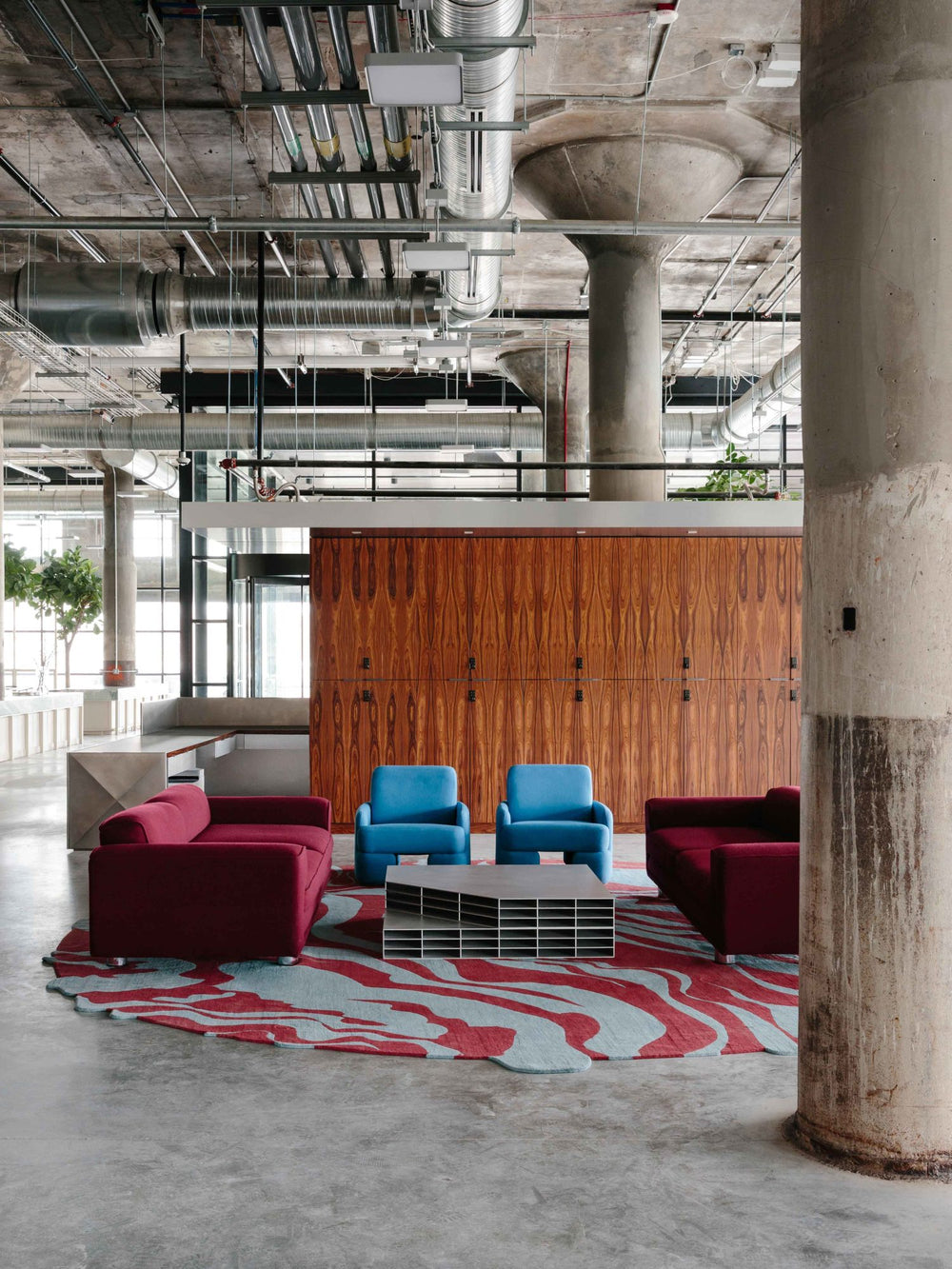
Interior by Civilian, Photographed by Brian Ferry.
3. Align Rugs with the Colour Palette
Your rug should work in harmony with the overall design scheme but that doesn’t mean it needs to be the same colour:
- Monochromatic Looks: Stick to neutral tones for a sleek, modern style but play with shape and size.
- Contrasting Colours: Use rugs as a statement piece in muted environments. Think vibrant reds, rich blues, or bold geometric patterns.
- Muted Elegance: For spaces that prioritize a calm aesthetic, opt for soft earth tones or muted pastels.
Pro Tip: Using complimentary colours will make the rug fit into the scheme and not stand out too much. Colour blending helps create subtle accents, using mottled effects helps dilute the brightness of colours making them settle into the space without being too loud.
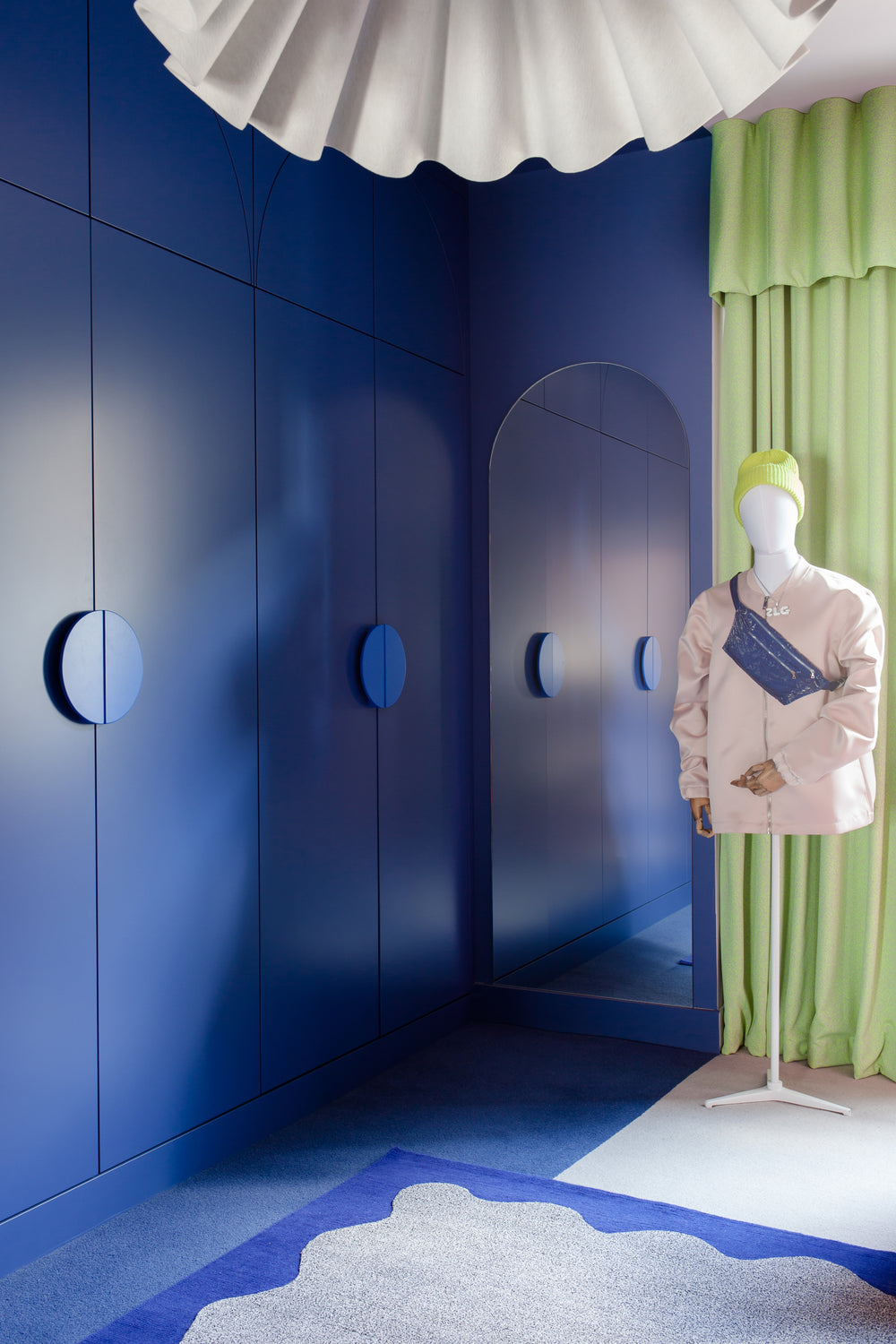
Interior and rug design by 2LG
4. Prioritise High-Quality, Durable Materials
Commercial spaces see a lot of wear and tear, so durability is key. Materials like wool are up to the task. They’re resilient, easy to clean, and maintain their quality over time.
There’s so many reasons why wool is such a great material for rug-making outside of durability so do check out this key information.
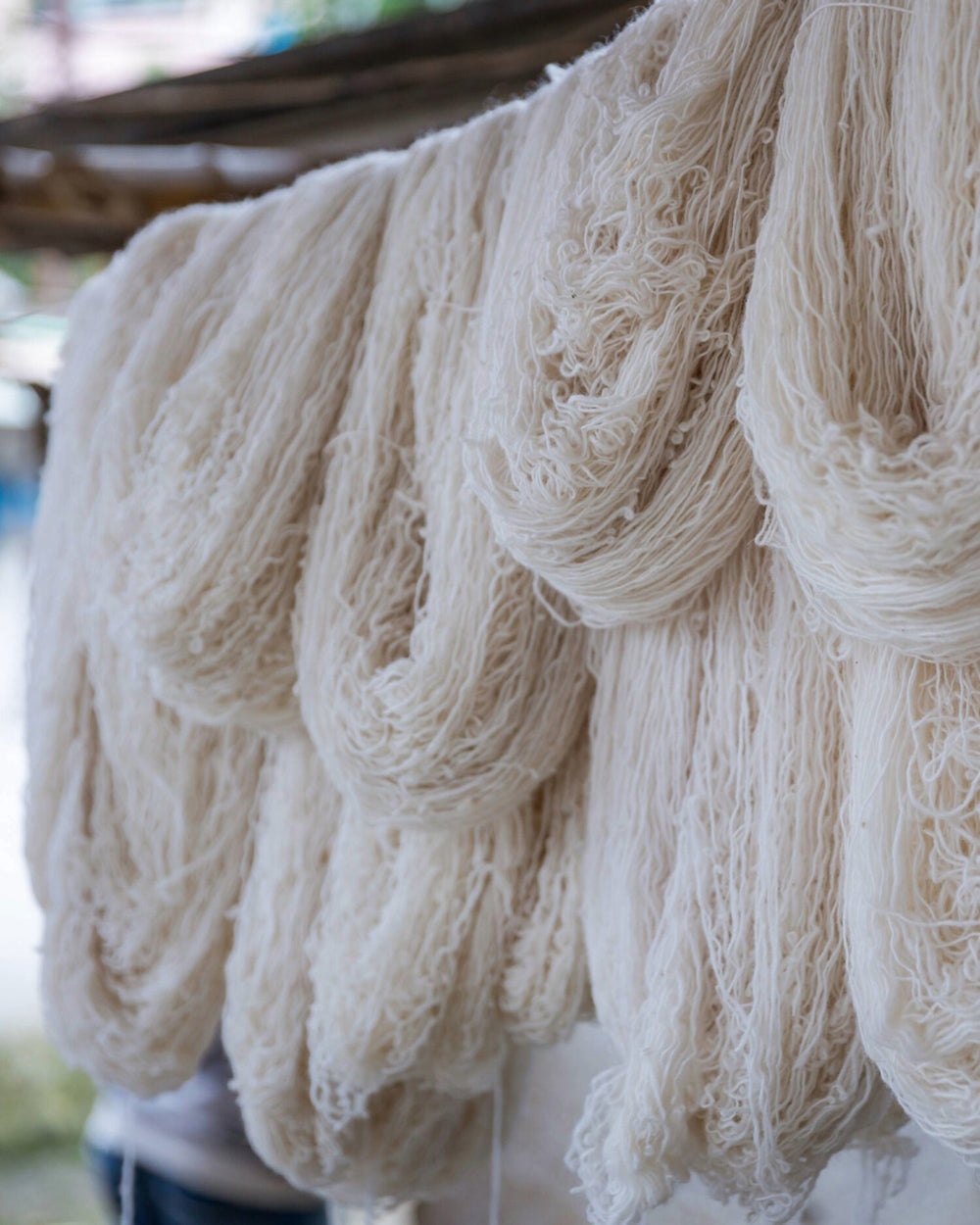
5. Don't Forget Safety
Make sure the rugs are slip-resistant and meet commercial safety regulations. Our Jacquard rugs come with an anti-slip backing and for other constructions we can supply anti-slip underlay upon request.
Wool is naturally fire retardant but we have however put our rugs through fire testing and have certification available to prove their credentials.
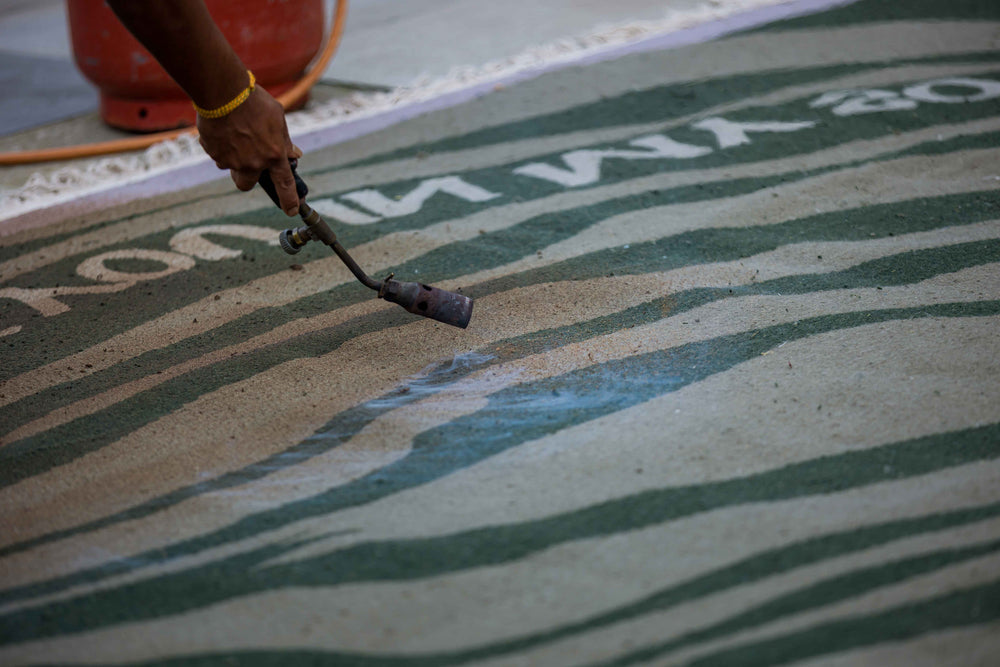
6. Sustainable Rugs
Sustainability matters more than ever in today’s design world. Look for rugs made from recycled materials, organic fibres, or BREEAM-approved options. These not only satisfy conscious clients but also make a strong statement about your commitment to responsible design.
Pro Tip: Ethics are also really important in this realm, so make sure to look for rug certification like Label STEP who ensure fair trade standards throughout the rug-making process.
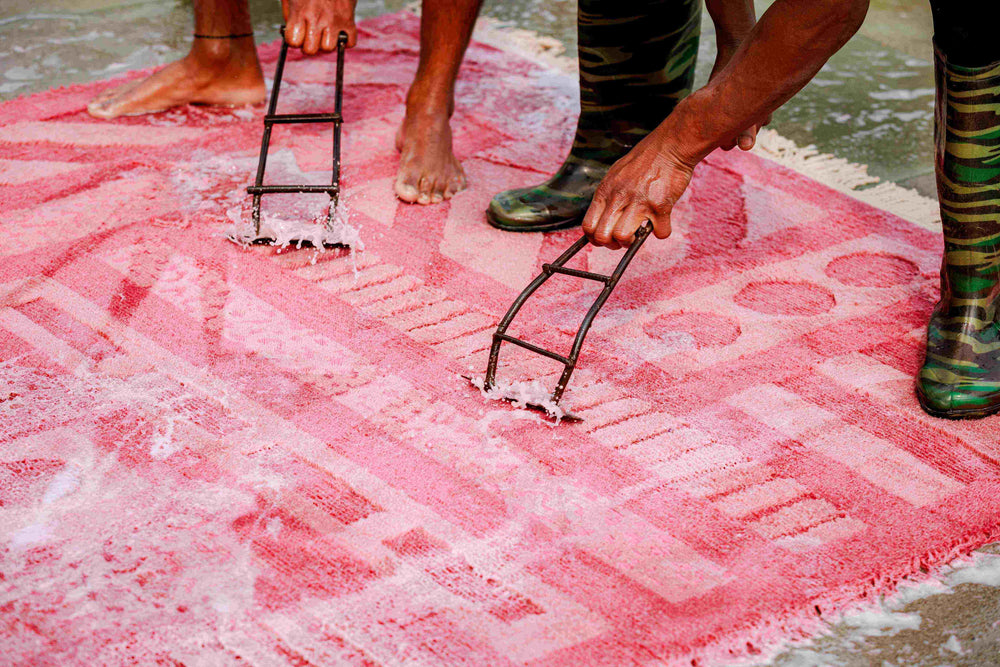
Transform Your Commercial Space with Rugs
Choosing and styling rugs for a commercial space doesn’t have to be overwhelming. Start by understanding the needs of the space, the flow of foot traffic and the desired vibe. Add a thoughtful mix of textures, patterns, and sustainable materials to bring your design vision to life.
Looking for bespoke, high-quality rugs tailored for innovative commercial designs? At FLOOR_STORY, we help you craft timeless rugs that demonstrate your commitment to quality and detail to your clients.
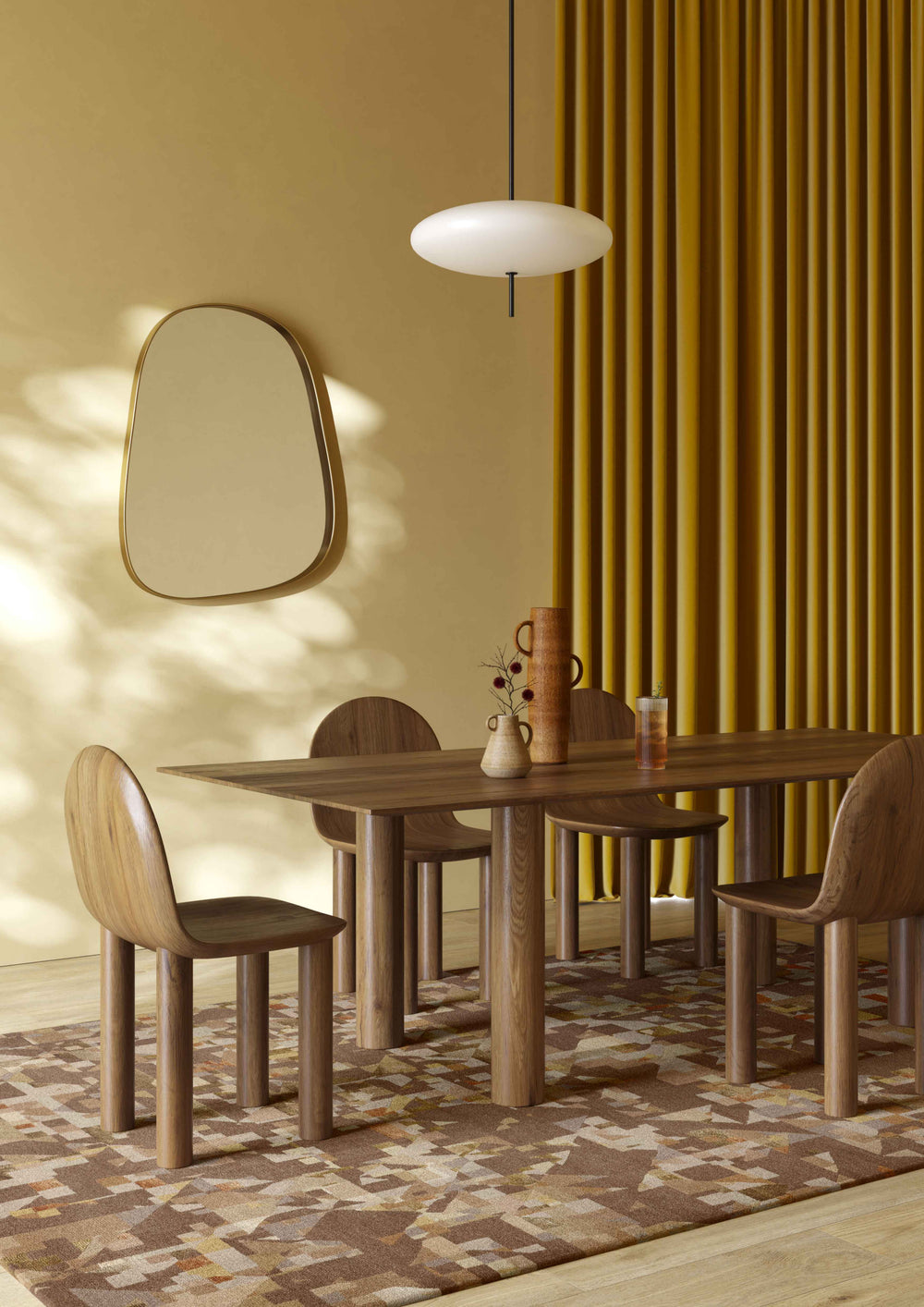
INSPIRING SPACES
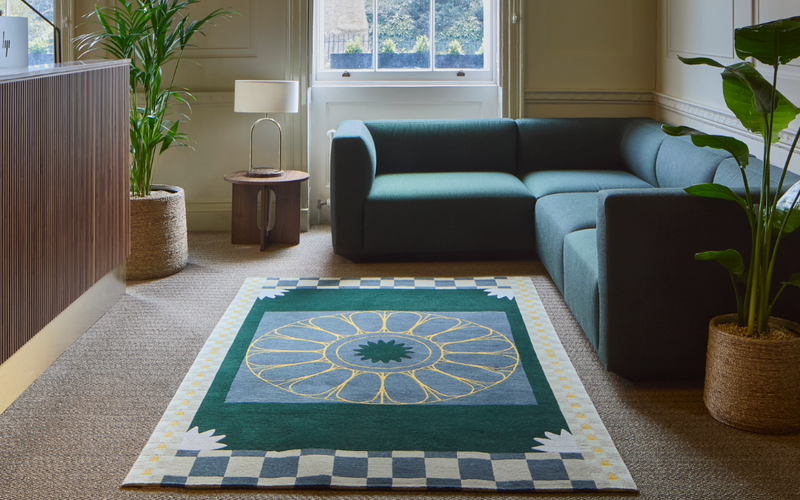
Bespoke Arts & Crafts inspired rugs for the Paul Mellon Centre with Trifle*
EXPLORE PROJECT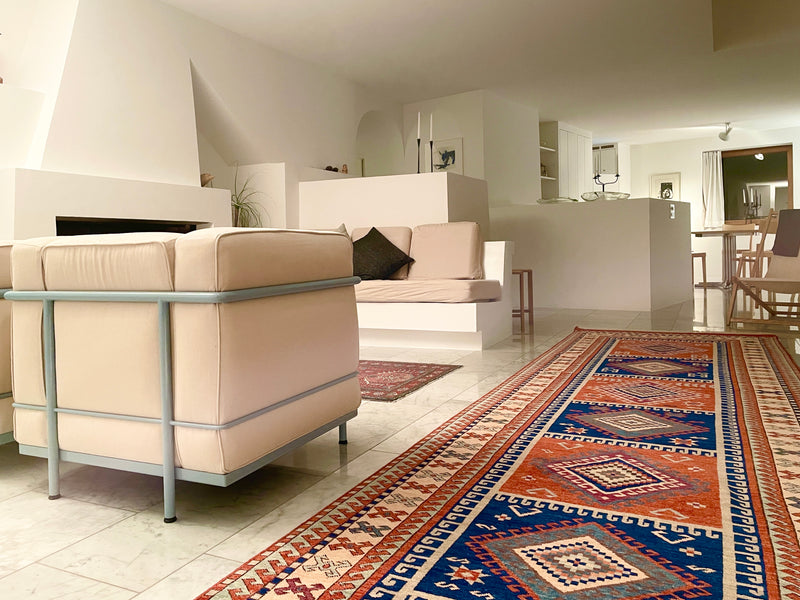
Vintage revival for beloved heritage rug selected by Rudolf Olgiati.
EXPLORE PROJECT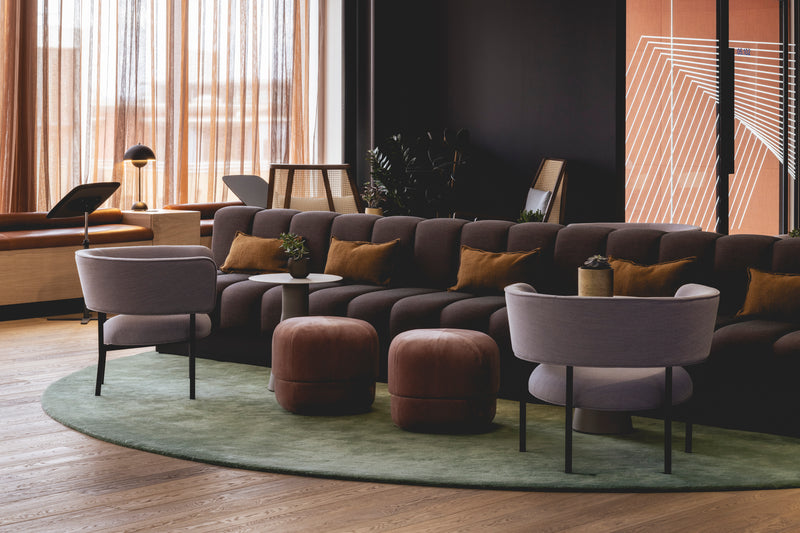
Custom colours make subtle gradients for a calm and contemporary co-working space.
EXPLORE PROJECT
